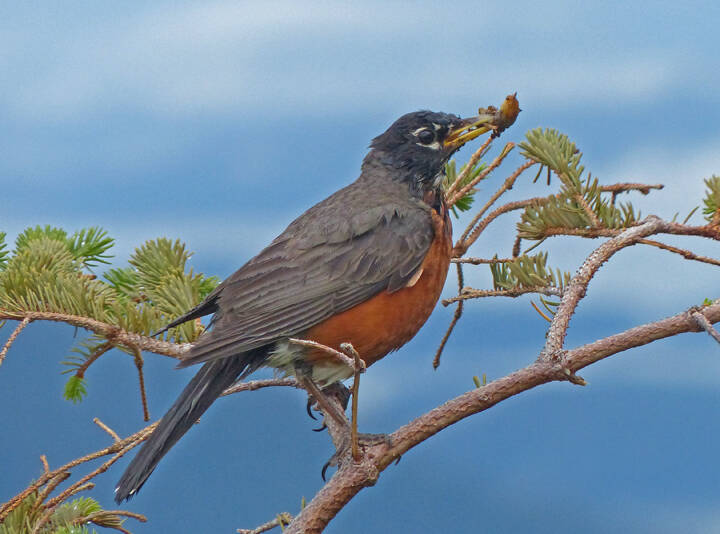By Mary F. Willson
For the Juneau Empire
For a long time, the accepted explanation was simply that perching birds just cling with tightly curled toes. A tendon runs from the toes up the elongated foot and behind the ankle.
When a bird bends the ankle a little, the tendon tightens and pulls the toes into a curl. There’s even a locking mechanism, rather like a ratchet, that keeps the toes curled without muscular effort.
It’s quite true that perching birds can grip tightly, to hold prey or perhaps hang upside down like a chickadee, although that may take some muscular effort in addition to the useful ankle tendon. But a bird perched at rest on a twig is not usually holding on tightly; the toes are loosely curled, more or less draped over the twig, and the bird is just balanced there. It can perch there, stably, while twisting and turning its head to track what is going on around it or while holding the head steady as the body bobs up and down as the twig moves. How do they do that?
Birds, like most other vertebrates, have complex organs in their heads (one by each ear) that are responsible for maintaining equilibrium. The principal working parts are three fluid-filled semicircular canals (one horizontal and two vertical at right angles to each other), and two small chambers housing viscous fluid and tiny stones. When equilibrium is disturbed, the fluids move, triggering lots of tiny hair-like structures to send signals of disturbance to the brain. Then, if all is goes well, the brain manages to direct the body to restore its balance.
Sometimes, as we know from experience, that system is overtaxed. If we change position or direction of movement too rapidly, we can get dizzy and may start staggering or even fall down. Human gymnasts must somehow train their balance organs and their connections, so that doesn’t happen to them. Similarly, tree squirrels, which rapidly change direction of travel, must have ways of maintaining balance.
Birds can have this problem too. For them, it is a common problem. They may have to perch on a wobbly twig but keep the head steady while surveying their environment. Or, conversely, they may have to move the head around, keeping track of things, while the body is stationary. So why don’t they dizzily fall off their perches?
A growing body of evidence suggests that birds have a second organ of equilibrium, located near the hip. The lowest vertebrae (lumbar, sacral and a few caudal ones) of a bird’s spine are fused together into a unit called the synsacrum and to the pelvis. The probable organ of equilibrium (called the lumbo-sacral organ) is an egg-shaped glycogen (a polysaccharide) body in a dorsal groove of the spinal cord, together with a set of transverse canals in the synsacrum that align with lateral lobes on the spinal cord, and that arrangement is somehow linked to the nervous system. It’s not at all clear how this might work, but it’s best developed in birds that perch.
Having two organs of equilibrium seems to allow birds to manage head and body separately in challenging circumstances. However, more detailed research is needed to show just how this works and how it is all coordinated.
• Mary F. Willson is a retired professor of ecology. “On The Trails” appears every Wednesday in the Juneau Empire.

